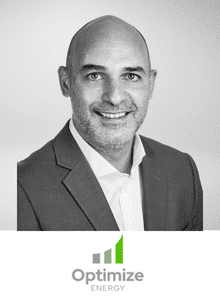Webinar: Biogas to Hydrogen - a Net-Zero Pathway

Ignacio Sáenz
Head of department origin and structure

Alejo Loira
Director energy project finance

Miguel Ángel Amores
Energy Manager

Matías Gallego
Partner

Belén Gallego
CEO [Moderator]

John Williams
Director / Head of Hydrogen

Antonio Lopez-Nicolas
Deputy Head of the Renewables and Energy System Integration Policy Unit

Belén Gallego
CEO [Moderator]

Alyse Bordelon
Originator - Sustainable Gas

Andy Dvoracek
VP, Business Development

Tanya Peacock
Managing Director

Gabriel Olson
Director, Carbon Strategy and Policy + Head of Hydrogen Markets

Belén Gallego
CEO [Moderator]
Producing hydrogen from biogas through Steam Methane Reforming (SMR) promises a pathway to net-zero carbon H2 at an attractive cost.
Over 95% of hydrogen in the United States is produced from natural gas through Steam Methane Reforming (SMR); a mature process that yields hydrogen at an attractive cost of 1.3 dollars per kg, according to 2022 estimates. However, this is an energy intensive, high-temperature (>800°C) process that comes with a large carbon footprint, which some experts put at 12 tons of CO2 per ton of hydrogen.
The carbon footprint of SMR-produced hydrogen can be radically reduced by replacing natural gas with biogas (also known as renewable natural gas). Some even argue that, depending on the feedstock and production method, biogas can be carbon negative. Emissions can be further reduced in the SMR process if it is powered by renewable heat and if carbon capture, storage, and utilization (CCSU) technology is deployed.
Can hydrogen derived from biogas through SMR actually be considered net-zero? And can biogas plus SMR really yield low-cost hydrogen? How does it compare against electrolytic hydrogen?
Answering these questions is fundamental, as an array of clean H2 production pathways compete for IRA tax credits worth up to $3 per kilogram of hydrogen. The Treasury Department is now working on how to settle the tax credits designed to advance the production of clean hydrogen with the Internal Revenue Service (IRS).
Join this webinar to find out more about the technology, understand the opportunity it represents and find out whether it can reach the coveted zero-carbon status.
- Get an insight into the economics of producing clean hydrogen through the biogas plus SMR route
- Understand how biogas is produced and how it can be produced to be carbon negative
- Find out how renewable energy can power the steam methane reforming (SMR) process to minimize its carbon intensity of hydrogen derived from biogas
- Learn how carbon capture, storage and utilization can further reduce the CO2 footprint of the hydrogen production process
- Get access to case studies from companies that are producing hydrogen from biogas through SMR in the United States
The webinar is free to attend but places are limited. Fill in the form now to secure your spot.
Webinar: Biogas to Hydrogen – a Net-Zero Pathway
Hosted by:

Alyse Bordelon
Originator - Sustainable Gas

Andy Dvoracek
VP, Business Development

Tanya Peacock
Managing Director

Gabriel Olson
Director, Carbon Strategy and Policy + Head of Hydrogen Markets

Belén Gallego
CEO [Moderator]
Producing hydrogen from biogas through Steam Methane Reforming (SMR) promises a pathway to net-zero carbon H2 at an attractive cost.
Over 95% of hydrogen in the United States is produced from natural gas through Steam Methane Reforming (SMR); a mature process that yields hydrogen at an attractive cost of 1.3 dollars per kg, according to 2022 estimates. However, this is an energy intensive, high-temperature (>800°C) process that comes with a large carbon footprint, which some experts put at 12 tons of CO2 per ton of hydrogen.
The carbon footprint of SMR-produced hydrogen can be radically reduced by replacing natural gas with biogas (also known as renewable natural gas). Some even argue that, depending on the feedstock and production method, biogas can be carbon negative. Emissions can be further reduced in the SMR process if it is powered by renewable heat and if carbon capture, storage, and utilization (CCSU) technology is deployed.
Can hydrogen derived from biogas through SMR actually be considered net-zero? And can biogas plus SMR really yield low-cost hydrogen? How does it compare against electrolytic hydrogen?
Answering these questions is fundamental, as an array of clean H2 production pathways compete for IRA tax credits worth up to $3 per kilogram of hydrogen. The Treasury Department is now working on how to settle the tax credits designed to advance the production of clean hydrogen with the Internal Revenue Service (IRS).
Join this webinar to find out more about the technology, understand the opportunity it represents and find out whether it can reach the coveted zero-carbon status.
- Get an insight into the economics of producing clean hydrogen through the biogas plus SMR route
- Understand how biogas is produced and how it can be produced to be carbon negative
- Find out how renewable energy can power the steam methane reforming (SMR) process to minimize its carbon intensity of hydrogen derived from biogas
- Learn how carbon capture, storage and utilization can further reduce the CO2 footprint of the hydrogen production process
- Get access to case studies from companies that are producing hydrogen from biogas through SMR in the United States
The webinar is free to attend but places are limited. Fill in the form now to secure your spot.
PRICE: FREE

